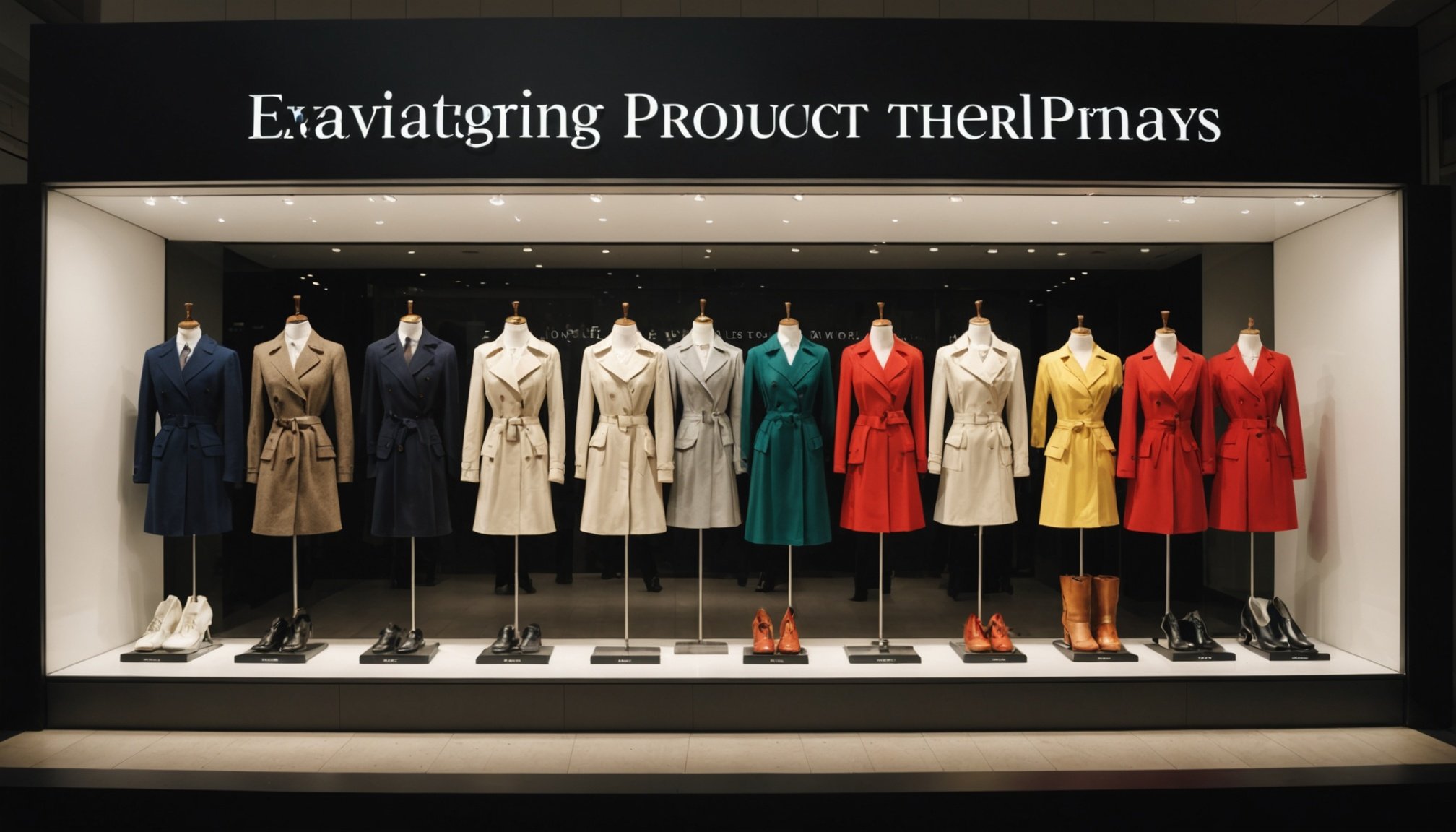Effective storefront displays are more than just eye-catching designs; they are strategic tools that can significantly enhance product visibility and drive customer engagement. Understanding consumer behavior plays a vital role in creating impactful displays that not only attract foot traffic but also translate into increased sales. Explore how to craft visually appealing storefronts through thoughtful design elements and innovative techniques, ensuring your products capture attention and inspire action.
Importance of Storefront Displays in Attracting Customers
Capturing customer attention is crucial in retail, and thoughtfully designed storefront displays play a vital role in achieving this. These displays serve as your first interaction with potential buyers, shaping their initial impressions. A compelling design can drive foot traffic, inviting customers to explore further.
This might interest you : Top Marketing Tactics to Boost Your New Brighton Cafe”s Success
Effective storefronts are more than just aesthetic; they directly impact product visibility and sales performance. Research shows that showcasing key items increases the likelihood of purchase by placing them at the forefront of customer decision-making. Positioning and design can steer the viewer’s gaze strategically.
Understanding consumer behavior is integral to optimizing display designs. Factors like color psychology, the arrangement of products, and thematic coherence draw attention and build emotional connections with passersby. When these elements resonate with customer preferences, they translate into tangible results, reinforcing brand identity and trust.
In the same genre : Essential Elements for Crafting a Mobile App Tailored to UK Retail Enterprises
For businesses eager to refine their approaches, solutions like those shared in the Retif guide offer best practices and actionable tips. By implementing these strategies, retailers maximize the potential of storefront displays, converting them into silent salespeople operating 24/7.
Remember, your storefront isn’t just a window—it’s an unmissable opportunity to engage customers and set the narrative for their in-store experience.
Key Elements of Visually Appealing Storefront Displays
Achieving visually appealing storefronts requires a thoughtful combination of design strategies. To start, lighting plays a crucial role. Not only does it highlight key products, but it also sets the overall mood. For instance, soft, warm lighting can create an inviting ambiance, while brighter, focused lights can draw attention to specific items. Layering lighting—using a mix of spotlights and ambient light—adds depth and interest to the display.
Another vital aspect is the use of cohesive color schemes. Consistent colors can tie the display together. For example, a storefront showcasing summer apparel might utilize bright, cheerful hues like yellow and turquoise, reinforcing the seasonal theme. Overloading on colors, however, can overwhelm the eye, so a balanced palette is key.
Successful storefronts also emphasize thematic consistency. A clear theme not only captures attention but communicates a strong brand story. Whether it’s a rustic holiday vibe with earthy tones and wooden decor or a sleek, modern tech setup, staying true to a theme avoids confusion.
Finally, balancing simplicity with creativity is essential to avoid visual clutter while standing out. An overcomplicated display might deter potential customers. Instead, focus on clean, strategic arrangements that let each element shine.
Techniques for Showcasing Featured Products Effectively
A strategic product placement approach is essential for grabbing customer attention. When positioning featured products, placing them at eye level is one of the most effective techniques. This ensures they are immediately visible and accessible, maximizing their appeal. Research shows customers naturally scan shelves at eye level before looking elsewhere.
Another impactful method involves using pyramid layouts or grouping items strategically. Pyramid layouts guide the customer’s gaze upward, creating a natural focal point. Grouping complementary items together not only draws attention but also enhances perceived product value. For instance, pairing a stylish mug with premium coffee beans creates a cohesive story around the products.
To sustain customer interest, it’s vital to rotate displays regularly. Even the most beautifully presented setup can lose its charm if it remains static for too long. Refreshing layouts or introducing new featured products keeps the displays dynamic and stirs curiosity.
Implementing these techniques fosters a more engaging shopping experience while encouraging impulse buys.
Best Practices for Storefront Design that Boost Sales
Designing a storefront optimally is crucial for increasing customer engagement and achieving higher sales. One effective strategy is to incorporate interactive elements or technology. Options like touchscreens or motion-detecting displays can immediately grab attention and provide a memorable experience. For example, allowing customers to explore product details digitally enhances their connection with the merchandise while making your storefront more modern and dynamic.
Another impactful approach is leveraging storytelling through displays. Emotional connections play a significant role in purchasing decisions, so crafting a story around your products strengthens that bond. For instance, a window display featuring a cozy holiday scene can evoke nostalgic emotions, nudging customers to step inside. This tactic taps into the customer’s feelings and builds a holistic impression around your brand.
Additionally, ensuring accessibility and easy navigation around your storefront is essential. Clear signage directing to entrances or accessible areas for all customers, including those with disabilities, not only promotes inclusivity but also creates a smooth shopping experience. An accessible layout invites more foot traffic into your store, which naturally results in better sales opportunities.
Optimizing storefront design isn’t just an art; it’s a proven driver of revenue.
Psychological Insights on Customer Engagement in Storefront Displays
Storefront displays are a silent but persuasive force, influencing consumer psychology and buying behavior in ways shoppers might not even notice. The strategic use of color psychology can evoke specific moods that shape customer perceptions. For example, warm colors like red or orange often create energy and urgency, encouraging impulse buys. In contrast, cooler tones like blue or green evoke calm and trust, making them perfect for high-value or wellness products.
Urgency is another effective trigger. Storefronts that highlight limited-time offers or showcase exclusive items subtly prompt customers to act quickly, capitalizing on their fear of missing out (FOMO). A countdown timer or bold “Last Chance” message can amplify this effect.
However, visuals must also convey organization. A clean and professional storefront fosters trust, as clutter may signal disorganization or lower product quality. Studies in consumer psychology show that tidy, well-planned displays enhance credibility, making shoppers more likely to purchase.
By linking psychological cues to visual elements, displays can do more than attract attention—they can actively shape buying behavior.
Examples of Successful Storefront Displays and Lessons Learned
A variety of success stories from renowned brands demonstrate how impactful storefront displays can be in attracting customers. For instance, Apple’s minimalistic approach centers on showcasing products in an open and engaging atmosphere, encouraging curiosity and interaction. This effective example highlights the importance of simplicity and focus on functionality to drive foot traffic.
Small businesses, too, have found innovative ways to compete. A bakery in New York incorporated dynamic window displays with rotating seasonal themes, drawing in passersby and building a loyal customer base. This storefront case study teaches us the value of staying relevant through adaptable and creative design elements.
One of the challenges faced by companies involves balancing aesthetics with practicality. For example, a boutique retailer struggled with overly crowded windows that failed to captivate shoppers. By streamlining their display and emphasizing a single standout product, they resolved this and saw increased engagement.
The lessons learned from these examples are clear: simplicity, adaptability, and a customer-centric approach are essential for successful storefront designs. For more insights into maximizing storefront potential, explore Retif. By applying these strategies, businesses can enhance their visual appeal and effectively connect with their audience.
Metrics and Tools for Measuring Storefront Display Effectiveness
Understanding and tracking storefront success begins with identifying key performance indicators (KPIs). These KPIs might include increased foot traffic, conversion rates, or even brand visibility. By setting measurable goals, businesses can evaluate the real impact of their displays.
Foot traffic counters are a fundamental tool. They measure the number of people entering a store, offering insights into how a display influences customer visits. Linking this data with sales analytics provides a clearer picture of how effective the storefront is at converting visitors into buyers. For example, if foot traffic rises without a corresponding boost in sales, adjustments to the display messaging or product placement may be needed.
Customer feedback and behavior analysis are equally critical. Tools like surveys or real-time monitoring of shopper behavior can reveal how well a display engages its audience. Observing patterns, such as dwell times near specific items, ensures you’re not just attracting visitors but aligning displays with customer interests.
For a broader strategy, combining these tools helps refine displays over time. Businesses can continually improve by addressing insights from data, visitors’ input, and sales metrics.











